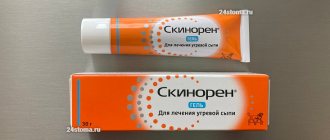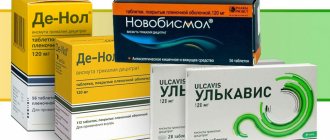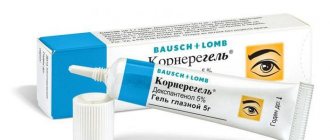Compound
The active substance of Sonapax, whose international name (INN) is thioridazine, is thioridazine hydrochloride , which contains 10 mg or 25 mg per tablet.
The excipients are: lactose monohydrate, talc, colloidal silicon dioxide, gelatin, corn starch, stearic acid.
The shell contains acacia gum, sucrose, talc, and dye.
Pharmacodynamics and pharmacokinetics
The active substance has a central and peripheral effect on the nervous system. The substance can suppress certain functions of the brain stem, as well as have an antihistamine and quinolytic effect . It does not suppress motor activity, has no antiemetic effect, and estrapyramidal disorders less frequently than other antipsychotics.
In addition, thioridazine has a weak antidepressant, anti-autism and antipsychotic effect.
Absorbed completely from the intestines. Reaches maximum concentration after administration after 2-4 hours. About 35% of the drug is excreted by the kidneys, the rest is excreted through the intestines (both in pure form and in the form of metabolites). through the hematoplacental barrier into breast milk.
Description of the drug
Sonapax is related to antipsychotics. Does not have a powerful antipsychotic effect. This non-medication is characterized by the following properties:
- psychotropic;
- sedative;
- anti-allergenic;
- anxiolytic;
- anticholinergic.
The therapeutic effect, like a sleeping pill, depends on the dosage of the medication. When used in medium dosages, the drug has a sedative effect. If you take minimal doses, you can cope with fatigue, lethargy, lethargy, and apathy. Large dosages are indicated for manic and depressive states, mental disorders, and schizophrenia.
Indications for use of Sonapax
The drug is prescribed for the following diseases:
- schizophrenia;
- psychomotor agitation;
- withdrawal syndrome;
- psychoses;
- Huntington's disease;
- schizoaffective disorders;
- teak;
- psychosomatic disorders;
- aggressiveness, inability to concentrate for long periods of time;
- neuroses , which are accompanied by sleep disorders, anxiety, obsessive states, psycho-emotional stress, depressive disorders, fear;
- skin diseases that are accompanied by severe itching.
For children, indications for the use of Sonapax are behavioral disorders accompanied by increased psychomotor activity.
Customer Reviews
Reviews from patients indicate the effectiveness of the product, but at the same time the presence of a large number of adverse reactions.
Gennady, 42 years old
“I started taking the medication after I passed a medical examination at work with a neurologist. I previously noted a feeling of anxiety or fear in myself, but did not attach any importance to it. After the first dose of 1 tablet before bed, I quickly fell asleep, but that’s where the benefits ended. In the morning I couldn’t wake up, it was as if I had been run over by a roller. I walked around all day, feeling depressed. My head was very dizzy. I don’t recommend taking it.”
Irina, 54 years old
“The therapist prescribed Sonapax for me when I told her all the symptoms and told her about insomnia. I took half a tablet for three days in a row. I was overcome by weakness. During the whole working day I couldn’t really do anything, my head hurt a lot. Although I began to fall asleep much better and faster. I was left with two impressions.”
Contraindications
You should not take the drug in the following cases:
- children under 4 years old;
- liver failure;
- pronounced depression of the central nervous system;
- lactase deficiency;
- hypersensitivity to any component of the drug and any phenothiazine derivatives;
- severe depression ;
- arrhythmias;
- lactose or fructose intolerance;
- prolonged QT interval, taking drugs that prolong the QT interval;
- blood diseases;
- decreased activity of the CYP2D6 isoenzyme;
- glucose-galactose malabsorption;
- coma.
The drug should be prescribed with caution in the following cases: hematopoietic disorders, Parkinson's disease , cachexia , alcoholism , angle-closure glaucoma , myxedema , vomiting , breast cancer , renal failure , Reye's syndrome , duodenal and gastric , prostatic hyperplasia , epilepsy , diseases, which increase the risk of thromboembolic complications, diseases that are accompanied by breathing disorders. Prolongation of the QT interval increases the risk of severe toxic effects.
Special instructions for the use of the drug Sonapax
Prescribed with caution for alcoholism (tendency to hepatotoxic reactions), pathological changes in the blood (impaired hematopoiesis), breast cancer (due to phenothiazine-induced secretion of prolactin, the potential risk of disease progression and resistance to treatment with endocrine and cytotoxic drugs increases), angle-closure glaucoma, prostate hyperplasia with clinical manifestations, liver and/or kidney failure, peptic ulcer of the stomach and duodenum during an exacerbation; diseases that are accompanied by an increased risk of developing thromboembolic complications, Parkinson's disease (extrapyramidal effects are enhanced); epilepsy; myxedema; chronic diseases that are accompanied by breathing problems (especially in children); Reye's syndrome (increased risk of hepatotoxicity in children and adolescents); cachexia, vomiting (the antiemetic effect of phenothiazine can suppress vomiting associated with overdose of other drugs), the elderly. During the treatment period, it is necessary to monitor the morphological composition of the blood; refrain from drinking alcohol and engaging in potentially hazardous activities that require increased concentration and speed of psychomotor reactions, since Sanopax impairs coordination of movements and reduces reaction speed, especially at the beginning of treatment. Before starting treatment, it is advisable to conduct an ECG study to exclude long Q-Tc and determine the concentration of calcium, magnesium and potassium in the blood serum. If a prolonged QTc (450 ms in men and 470 ms in women), thioridazine should not be used. If the QTc beyond 500 ms, thioridazine should be gradually discontinued. During treatment with Sonapax, it is necessary to periodically monitor the concentration of electrolytes in the blood serum and correct possible electrolyte disturbances. The effect of thioridazine on the fetus has not been studied. During pregnancy, the use of the drug is possible only in cases where the therapeutic effect for the mother outweighs the potential risk to the fetus.
Side effects
The medicine Sonapax can cause the following side effects:
- agitation , insomnia , impaired thermoregulation, fainting , confusion, agitation, parkinsonism , decreased seizure threshold, tardive dyskinesia, dystonic disorders , emotional disorders, NMS, extrapyramidal disorders;
- cholestatic hepatitis , anorexia , diarrhea , increased appetite, vomiting, hyposalivation , nausea, hypertrophy of the lingual papillae, dyspepsia , intestinal obstruction ;
- tachycardia (including the “pirouette” type), decreased blood pressure, ECG changes (including prolongation of the QT interval, depending on the dose size);
- leukopenia , pancytopenia , thrombocytopenia , agranulocytosis , granulocytopenia , aplastic anemia , eosinophilia ;
- rash, allergic skin reactions, exfoliative dermatitis , erythema , bronchospastic syndrome , nasal congestion, angioedema ;
- photosensitivity, skin melanosis (develops when taking high doses for a long time);
- weight gain, false positive pregnancy test;
- dysmenorrhea , paradoxical ischuria , ejaculation disorder, hyperprolactinemia , dysuria , decreased libido, priapism , gynecomastia ;
- photophobia, visual impairment.
Adverse reactions
Memorable use of Sonapax is likely to cause undesirable reactions from blood vessels, the central nervous system, and other organs and systems:
- persistent loss of appetite, change in taste;
- weight loss or gain;
- change in thermoregulation;
- arrhythmia, tachycardia;
- insomnia;
- agitation;
- increase in prolactin levels;
- abnormal blood count: thrombocytopenia, agranulocytosis;
- skin redness, swelling of mucous membranes;
- disruption of the menstrual cycle;
- decreased libido;
- visual impairment.
If any signs of intolerance or side effects appear, you should discuss the possibility of replacing the drug with a similar one with your doctor.
Instructions for use of Sonapax (Method and dosage)
The tablets are taken orally, the dosage regimen for each patient is set individually.
For adults with psychosis , 150-400 mg per day is usually prescribed on an outpatient basis, divided into 3-4 doses; in a hospital setting - 250-800 mg. It is necessary to start treatment with low doses (25-70 mg per day), gradually increasing the dose until the optimal effect is achieved (the antipsychotic effect is observed after the start of treatment after 10-14 days). Usually the course of treatment lasts several weeks. As a maintenance dose, 70-200 mg is prescribed once before bedtime. Elderly people are prescribed lower doses - 100-300 mg. The drug must be discontinued gradually.
The therapeutic dose for mild emotional and mental disorders per day is 50-200 mg.
For psychosomatic disorders, you need to take 10-75 mg per day.
If it is necessary to suppress severe itching, the dose size is determined individually, however, it should not be more than 200 mg.
Children aged 4-7 years should take 10-20 mg per day (in two to three doses); 8-14 years old – 20-30 mg (in three doses), 15-18 years old – 30-50 mg (in three doses).
Instructions for Sonapax for withdrawal symptoms : patients are prescribed from 10 to 400 mg, depending on the degree of the condition.
Sonapax in clinical practice
Already at the very beginning of its use, Sonapax was classified as a so-called “minor” antipsychotic due to its lack of a powerful antipsychotic effect. However, the unique psychotropic properties of the drug, primarily due to the severity of the sedative and anxiolytic effect, determined a fairly wide range of its psychotropic activity in a wide variety of psychopathological syndromes within various nosological forms of mental illness [1]. With the advent of Sonapax, the main therapeutic properties of thioridazine were confirmed. Sonapax is also interesting in its own way because some indications for its use were clarified and formulated in the course of clinical practice based on the direct experience of doctors, and not just on the results of scientific research. The high degree of safety of the use of Sonapax served as the basis for significantly expanding the age limits of its use and prescribing it to patients in those age groups that pose the highest risk of developing drug complications or intolerance, namely in childhood and late age. The absence or minimal severity of neurological side effects when prescribing Sonapax allowed it to be widely used not only for functional mental illnesses at any age, but also for the widest indications, the drug began to be used for organic mental pathologies. The special nature of the psychotropic activity of Sonapax with its distinct anxiolytic and sedative effect with a weak expression of the antipsychotic effect itself determined its significance as the drug of choice for mental pathology of a non-psychotic level.
Over the past few decades, there has been an increase in the detection of this pathology both in clinical practice and in epidemiological studies, which is widespread in different regions.
The trend towards the integration of psychiatric and general somatic care has led to a certain mutual enrichment of internists and psychiatrists with knowledge about the relationship between somatic and mental pathologies. Many practicing doctors recognize the benefits of using psychotropic drugs in a complex of therapeutic measures. As it turned out, among the antipsychotics, Sonapax most closely meets the requirements of general medical practice
.
The situation has developed in such a way that internists (usually therapists and neurologists) often independently prescribe Sonapax to correct the mental state of their patients. Both in psychiatric and general somatic practice, Sonapax is widely prescribed both in inpatient treatment and in outpatient management of patients (in the latter case even more widely). It seems appropriate to summarize the information about this drug, taking into account the interests of doctors of various specialties. Sonapax (thioridazine) is a piperidine phenothiazine derivative, has a high affinity for muscarinic receptors, and blocks dopaminergic and cholinergic receptors, which explains the absence of extrapyramidal complications. Sonapax blocks peripheral M-cholinergic receptors and reduces the increased activity of the autonomic nervous system. By blocking H1-antihistamine receptors, Sonapax has the most pronounced antihistamine and anticholinergic effect among all drugs from the group of antipsychotics. When the drug is taken orally, Sonapax is absorbed quickly and quite completely, easily passes through histochemical barriers, including the blood-brain barrier, and is biotransformed to the active metabolites mesoridazine and sulphoridazine, which act as partially selective D2 and D3 antagonists. The half-life of Sonapax is 16 hours. Sonapax is produced by Elfa Pharmaceutical Plant A.O., and is available in 10 and 25 mg tablets. In the clinical classification of neuroleptics by P. Deniker and D. Ginestet (1975), which is most widespread in European countries, Sonapax is classified in the group of medium (“small”) neuroleptics with moderate antipsychotic and sedative properties without pronounced side effects. In accordance with developed by S.N. Mosolov [4] made a comparative assessment of the spectrum of clinical action of neuroleptics in Sonapax (thioridazine), the global antipsychotic effect reaches only an average level, the antihallucinatory-delusional effect is very weakly expressed, the anti-catatonic effect is practically absent. At the same time, Sonapax exhibits a strong sedative (hypnotic) effect and a moderate activating and antimanic effect. The hypotensive effect of Sonapax (thioridazine) is assessed as moderate, and the extrapyramidal effect as very weak. Sometimes the drug is classified as a “major” tranquilizer that does not have a suppressive effect on intellectual and mnestic functions. The main feature of this drug is its wide range of effects on various manifestations of affective pathology. Sonapax reliably eliminates anxiety, fear, aggressive tension, and a state of manic exaltation. In fact, this drug should be considered unique in the variety of its effects, acting either as a tranquilizer, or as an antipsychotic, or as an antidepressant. Sonapax is prescribed for the treatment of psychotic disorders, anxiety conditions, behavioral disorders and for the treatment of depressive symptoms. Its effectiveness is the more obvious, the more pronounced the affective components in the structure of the psychopathological syndrome. The nature of the psychotropic effect of Sonapax depends both on the characteristics of the psychopathological syndrome and on the dosage level. It refers to drugs with a pronounced dose-dependent effect. In small and medium doses, the stimulating and antidepressant effect of Sonapax is more pronounced; in large doses, the sedative effect predominates. In small doses, the drug causes stimulation of patients specific to it, which turns out to be useful for initially inhibited, lethargic and depressive patients. The peculiarity of the psychotropic effect of Sonapax is that, unlike many antipsychotics, with increasing doses to high levels, stimulation decreases, but inhibition does not increase, taking the drug does not lead to lethargy and relaxation, or emotional indifference. The most clinically significant is the pronounced anxiolytic effect of Sonapax
, combined with a mild antidepressant effect. The given characteristics predetermine the prescription of Sonapax for conditions with leading manifestations in the form of anxiety and fear with comorbid disorders in the form of obsessions, phobias, senestopathies and hypochondriacal disorders. The prescription of Sonapax for mixed affective states that combine symptoms of depressive and manic poles or symptoms of inhibition and excitation in depression with anxious agitation is completely justified. In these clinical situations, its use as monotherapy is possible, especially when it is necessary to avoid the stimulating effect of antidepressants or the hypersedation of antipsychotics while prescribing them in these cases. Combination therapy of mixed affective states using new generation antidepressants and Sonapax is also justified. Despite the absence of extrapyramidal effects, the weak antipsychotic effect of Sonapax significantly narrows the possibilities of its use in acute psychotic disorders with psychomotor agitation, especially since there are no injectable forms of the drug and achieving an antipsychotic effect is sometimes possible when using high doses (up to 600 mg). The prescription of Sonapax for this purpose is justified only in cases with absolute intolerance to traditional antipsychotics with powerful antipsychotic effects. Monotherapy with high doses of Sonapax can be recommended for subacute psychosis with affective-delusional symptoms, when delusions and hallucinations are congruent, that is, they correspond in content to the leading affective disorder and are characterized by instability and variability. In psychiatry, the possibilities of using Sonapax, as follows from the characteristics of its medicinal properties and as proven by many years of practice [1], are practically unlimited (Table 1).
If Sonapax is used quite rarely as the only drug for the treatment of psychotic disorders,
then the inclusion of Sonapax in combination psychopharmacotherapy is completely justified
.
It is advisable to add Sonapax to both antipsychotic and antidepressant therapy. The use of Sonapax is especially effective in cases where it is necessary to quickly eliminate the anxiety component with the experience of fear and tension, agitation and sleep disturbance in advanced depressive and depressive-delusional states. In these cases, doses of 150 mg to 200 mg per day are used. Sometimes it is possible to avoid the use of high doses of antipsychotics and antidepressants, that is, to make treatment safer. In slightly smaller doses, Sonapax is maintained during maintenance therapy in remissions of paroxysmal endogenous psychoses. Sometimes, when the quality of remission deteriorates and there is a high risk of exacerbation of the disease, especially when anxiety disorders and sleep disorders are one of the first manifestations, it is enough to increase the dose of Sonapax to prevent the development of an acute attack. Excellent tolerance makes it a very suitable drug for long-term maintenance therapy. Due to the virtual absence of neurological side effects, Sonapax is used in the treatment of a wide variety of conditions of organic origin.
In old age, Sonapax is often used to relieve agitation in patients suffering from dementia of vascular, atrophic or mixed origin, as well as in states of confusion with severe motor restlessness.
The prescription of the drug is justified both for amnestic confusion with behavioral disorders, and for confabulatory and delirious confusion of vascular or toxic origin. Patients with dementia often experience sleep inversion with night waking and aimless walking with the desire to leave the room or with the repetition of stereotypical actions. Prescribing Sonapax in doses of up to 100–150 mg allows you to cope with this condition and significantly facilitate the care of such patients. Due to its pharmacological properties, the target symptom of Sonapax is anxiety disorder, i.e. the drug is undoubtedly an effective anxiolytic, which has led to the most common indications for its use in non-psychotic affective and anxiety-neurotic disorders. As many years of clinical experience have shown, the success of Sonapax therapy in these clinical situations is beyond doubt, regardless of the nosological affiliation of these disorders. These can be neurosis-like states in low-progressive schizophrenia or schizotypal disorder, in affective diseases with phase disorders of the cyclothymic level, as well as in actual neurotic and stress-related disorders. The expediency of prescribing Sonapax does not raise any doubts in case of psychogenically caused depressive and anxiety-depressive reactions of maladjustment, i.e. for a wide range of reactive states. The thymoleptic effect of Sonapax itself does not allow it to be considered a drug of choice when prescribing antidepressant therapy. However, in a dose of up to 150 mg, it can be used to treat predominantly anxious and anxious-hypochondriacal depressions, especially when they are psychogenic or conditioned. However, Sonapax is much more often used in the treatment of depression, as an additional remedy aimed at relieving anxiety and correcting depressive sleep disorders. Sonapax therapy for manic and especially hypomanic states
is more successful .
The use of Sonapax is effective not only when the condition is exhausted by affective pathology, but also when manic elation is combined with undeveloped delusional disorders, ideas of revaluation of one’s own personality, ideas of reform, invention, or elements of acute sensory delirium with exaltation. When nosologically assessed, such conditions are usually referred to as phases of affective illness (MDP, cyclothymia) or attacks of schizoaffective psychosis. Reduction in the intensity of manic affect is achieved with doses of at least 150–400 mg or higher. At such doses, the neuroleptic effect of the drug is realized. In this case, first of all, Sonapax exhibits a sedative effect, which makes it possible to reduce the severity of psychomotor agitation, achieve orderly behavior, and increase the duration of night sleep, which is noticeably shortened in these disorders. The most convincing effect of Sonapax was found in the treatment of hypomanic conditions. In these cases, the use of the drug as monotherapy is sufficient. The effect of Sonapax is manifested in the rapid reduction of behavioral disorders, reduction of distractibility, speech disinhibition, anger and irritability, and subsequently has an effect on the equalization of mood, eliminating painful elevation of mood. Unlike other antipsychotics, the use of even high doses of Sonapax does not lead to the development of neuroleptic depression. The experience of using Sonapax for bipolar disorder has revealed another valuable property of the drug, which is its stabilizing effect on the affective sphere
.
It has been shown that this feature of Sonapax can be used in the treatment of mood disorders with continuous changes in affective phases, which required end-to-end administration of medium doses of the drug (200-300 mg) over a long period of time. Many years of experience in using Sonapax in clinical practice, especially in outpatient settings, has established its strong position as a remedy necessary in the treatment of a wide range of anxiety-neurotic disorders. Undoubted indications for the use of Sonapax are anxiety disorders themselves, anxiety-phobic disorders with various contents of phobias, somatoform neurotic disorders, so-called latent depression with senesto-hypochondriacal and vegetative-vascular manifestations, appearing under the guise of vegetative-vascular dystonia or various algic syndromes. The nosological affiliation of these conditions does not affect the choice of doses and duration of treatment and, as a rule, does not determine the expected effectiveness of treatment with Sonapax. In some situations, mainly with endogenous pathology of a neurotic level, it may be necessary to carry out complex therapy using other antipsychotic and/or antidepressant drugs. The undoubted anxiolytic effect of Sonapax is complemented by the drug's targeted effect on senestoalgia, in particular on the most common pathological sensations such as cardialgia and cephalgia. The range of doses of Sonapax prescribed for these disorders is quite wide and is determined by the severity of the disorders, the structure of the psychopathological syndrome, its monomorphic or polymorphic nature, the persistence or lability of symptoms. In addition, when choosing a dosage, the age of the patients must be taken into account. The daily dose can vary from 30 to 300 mg. A special group of indications for treatment with Sonapax are mental disorders detected in childhood/adolescence and in elderly and senile people
.
It is in these age groups of patients that the greatest difficulties in conducting psychotropic therapy (especially neuroleptic) are caused by organic brain pathology. In childhood and adolescence, it more often occurs in the form of residual symptoms, while in old age - in the form of initial manifestations of psychoorganic syndrome. In childhood, Sonapax has been used for many years and with constant success to treat a special behavior disorder in children, which is called hyperkinetic disorder
. The cardinal sign of this condition is impaired attention with constant distractibility, increased activity, motor disinhibition, and restlessness. Children cannot follow the rules of behavior in a group, class, or home environment, are constantly on the move, cannot concentrate on playing or studying, are inappropriately talkative, do not listen or interrupt their interlocutor or teacher, are distracted by the slightest extraneous irritants, show recklessness in situations, representing some danger, stand out in the children's team for their ability to thoughtlessly violate social rules. Typically, these manifestations are accompanied by persistent sleep disturbances in the form of difficulties falling asleep, a long transition from wakefulness to sleep with increased agitation at this time, the onset of sleep is superficial and interrupted by frequent awakenings. Timely diagnosis of this disorder and the prescription of Sonapax contribute to the correction of this disorder, influencing excessive activity and helping to regulate behavior and improve sleep quality. The use of Sonapax is completely justified for other painful behavioral disorders in childhood and adolescence to reduce the manifestations of dissocial behavior with aggressiveness towards people and animals, with destructive tendencies, outbursts of anger, defiant provocative behavior or a persistently oppositional attitude towards people from the immediate environment. Another indication for treatment with Sonapax is a variety of neurotic conditions in children, including motor obsessions, tics, as well as children’s night terrors and school phobia. In these cases, a course of treatment with Sonapax is carried out either alone in small and medium doses, or in combination with other drugs. It is possible to prescribe Sonapax in minimal doses for acute neurotic reactions in children with sleep disturbances and anxiety (Table 2).
At a later age, especially in outpatient practice, Sonapax is most widely prescribed to normalize sleep (Table 3). Sonapax is often preferred over tranquilizers, since it avoids unwanted muscle relaxation and daytime aftereffects of hypnotic tranquilizers.
Specific indication for use of Sonapax
at a later age there are persistent
manifestations of senile itching
, as well as special psychopathological conditions known as dermatozoal delirium, when patients experience persistent painful sensations of tingling, burning, crawling, moving under the skin with a meager delusional interpretation.
Apparently, the effect of Sonapax therapy in these cases is explained not only by the neuroleptic (sedative) effect itself, but also by the powerful antihistamine properties of the drug, which are superior to those of other antipsychotics. A special aspect of studying the action of Sonapax was the use of the drug as a corrector of neuroleptic therapy
.
In cases where the abolition of neuroleptics did not lead to the reverse development of the resulting neuroleptic syndrome with extrapyramidal symptoms, the administration of small doses of Sonapax could be accompanied by rapid and complete relief from extrapyramidal disorders or their significant alleviation. However, when hyperkinetic symptoms predominate, a slower reduction in side effects is observed. The effect of the drug could not be attributed to a direct antiparkinsonian effect, since attempts to use it to correct akinetic syndrome showed its weak effectiveness. It seemed more likely that the therapeutic effect of Sonapax in these situations is explained by its peculiar antagonism towards other neuroleptics. In drug treatment practice, along with the prescription of Sonapax for the treatment of various psychopathological conditions caused by chronic alcoholism, its anti-anxiety and sedative effects are used. The drug finds its use in the relief of withdrawal syndromes, and its vegetative-stabilizing effect, as well as a hypnotic and analgesic effect, is also pronounced. Over the years of its many years of existence, Sonapax has gained recognition not only among psychiatrists, but has become quite widely used in general somatic medicine
(Table 4). It is possible to prescribe Sonapax in small doses before carrying out various types of therapeutic and diagnostic interventions, the anticipation of which causes fear, tension and worsening sleep. For the same purpose, the drug is widely used to overcome anxiety and depressive reactions, often iatrogenically caused and associated with emotional distress about the identification and diagnosis of a somatic disease that threatens life or the prospect of severe disability with the expectation of torment and physical suffering. This can apply to any area of internal medicine, but is especially common in oncological, cardiological and neurological practice. The doses of Sonapax used in these cases should not exceed the minimally effective ones.
In dermatology, Sonapax is often prescribed as a concomitant therapy to relieve itching and reduce emotional stress and irritability. In these situations, not only the mild neuroleptic effect of the drug is used, but also its pronounced antihistamine effects. In outpatient practice, therapists and neurologists, not without reason, prescribe Sonapax in small doses (10–25 mg) to patients of any age with complaints of sleep disturbances, persistent difficulties falling asleep, frequent awakenings, accompanied by anxiety. It has been noted that, unlike tranquilizers, patients easily switch to occasional use of the drug if the effect has been achieved with a certain course of treatment with regular daily intake of Sonapax in the evening hours. Sonapax can be recommended for achieving sedation in undeveloped states of delirious confusion with episodic motor restlessness and sleep disturbances observed in the post-traumatic, postoperative period and in patients with vascular crises and transient ischemic attacks of the brain. Short-term symptomatic treatment with Sonapax is prescribed as an addition to basic detoxification, vascular and other therapy. Sonapax, as a rule, combines well with other psychotropic and general somatic drugs. However, the peculiarities of its interaction with some of them should be taken into account [3]. Sonapax is not compatible
with adrenaline and anesthetics, reserpine, guanethidine.
It enhances the effect of sleeping pills, analgesics, narcotics and alcohol. At the same time, Sonapax weakens the effect of levodopa and amphetamine. Amitriptyline and antihistamines increase the anticholinergic activity of Sonapax. With the combined use of Sonapax and antidiabetic drugs, the likelihood of liver damage increases. When using Sonapax, it is advisable to periodically monitor the morphological composition of peripheral blood. When prescribing the drug to elderly and senile people, one should keep in mind some risk of paradoxical reactions. During the period of taking Sonapax, alcohol consumption is excluded due to the potentiating effect of the drug; it is not recommended to drive vehicles or work with complex mechanisms. Contraindications
to taking Sonapax are hypersensitivity to the drug, including phenothiazine derivatives, coma, hematopoietic failure, pheochromocytoma, porphyria, myasthenia gravis, angle-closure glaucoma, prostatic hypertrophy, organ failure, children under 4 years of age, the first trimester and the last week pregnancy.
Withdrawal of the drug during long-term use in sufficient therapeutic doses is carried out gradually after a period of dose reduction. In general, Sonapax is well tolerated; severe side effects
are practically not observed when using medium and especially small doses. However, when high doses are prescribed and long-term use is possible, although extremely rare, manifestations of arterial hypotension, especially orthostatic, cardiotoxic effects, sometimes with rhythm disturbances, which are functional and reversible [5]. Neuroendocrine disorders can manifest themselves in the form of weight gain, dysmenorrhea, lactorrhea. The well-known mild side effect of Sonapax is used in the practice of sex therapists and urologists to prevent premature ejaculation. Neurological side effects are extremely rare and, most likely, in the later stages of therapy, akathisia, impaired muscle tone and dyskinesia may occur. A specific complication of Sonapax therapy is toxic retinopathy, since thioridazine has a toxic effect on retinal photoreceptors [2]. However, there is a large gap between the therapeutic dose of Sonapax and the dose that is toxic to the eye. Retinal damage caused by thioridazine is described in the literature as the so-called “Melleryl retinopathy”. The maximum permissible dose of the drug from the point of view of safety for the eye is 600 mg. The process resembles retinal pigmentary degeneration and can occur after several weeks or months of continuous use of the drug. The incidence of retinopathy ranges from 3–14% and is clearly related to the dose of the drug used and the duration of therapy. The pathogenesis of retinopathy is associated with the direct effect of thioridazine on the retina - rod ellipsoids, in which the activity of the dehydrogenase enzyme is inhibited under the influence of thioridazine and the synthesis of rhodopsin is disrupted. Differential diagnosis of retinopathy at an early, functional stage is carried out with hysterical visual impairment and with accommodation paresis that occurs due to the cycloplegic properties of thioridazine or during combination therapy with other psychotropic drugs and correctors. The late stage must be differentiated from retinal pigmentary dystrophy. In case of toxic damage to the retina by thioridazine, in most cases, the onset of the process is detected in the macular area with subsequent spread to the periphery, and not “bone bodies”, the relationship between the appearance of pigmentation in terms of timing and the use of the drug, the absence of pigmentary dystrophy in the family history, the discrepancy between the ophthalmological picture and the degree of visual impairment functions. Summing up the review of the therapeutic effectiveness of Sonapax, it should be noted first of all that despite the fact that Sonapax (thioridazine) is an antipsychotic in its chemical structure, in terms of the characteristics of its clinical action the drug can rightfully be classified as a thymoneuroleptic due to its significant effect on affective components of mental disorder syndromes. The polyvalent nature of its effect on various psychopathological syndromes without significant dependence on their nosological affiliation explains the significant expansion of indications for its use. A wide range of doses from minimal to high allows you to flexibly vary therapeutic tactics, using the drug as a primary or additional agent and changing the dosage level depending on the stage of therapy. The good tolerability of Sonapax is combined with a clear therapeutic effect in a wide variety of mental disorders, predominantly of a non-psychotic level. The drug is recognized by doctors of various specialties, not only psychiatrists. The possibilities and benefits of Sonapax treatment have been proven for patients of all age groups, as well as for those with somatic diseases or organic brain damage. Equipment with this drug is available to medical institutions of various profiles, both inpatient and outpatient services. The experience of many years of practice using Sonapax demonstrates the possibility of changing ideas about the drug, not only without reducing its significance for medical practice, but also with expanding the indications for its use.
References 1. Avrutsky G.Ya., Neduva A.A. Treatment of mentally ill patients. M., 1988, pp. 39–40. 2. Goldovskaya I.L. Psychotropic therapy and the organ of vision. M., 1987, pp. 31–40. 3. Malin D.I. Drug interactions of psychotropic drugs. J. Psychiatry and Psychopharmacotherapy, 2001, No. 1, p. 20–24 4. Mosolov S.N. Fundamentals of psychopharmacology. M., 1996, 288 p. 5. Raisky V.A. Psychotropic drugs in the clinic of internal diseases. M., 1988, p. 32–36.
Overdose
An overdose of the drug has the following symptoms:
- ECG changes, ventricular fibrillation , arrhythmias , ventricular tachycardia , prolongation of PR and QT intervals, bradycardia , sinus tachycardia, decreased pressure, inhibition of myocardial function;
- sedation, hypothermia , coma , confusion, extrapyramidal disorders, hyperthermia , agitation , areflexia ;
- urinary retention, mydriasis , dry skin, nasal congestion, miosis , blurred vision;
- apnea, respiratory depression, pulmonary edema;
- constipation , decreased gastrointestinal motility, intestinal obstruction;
- uremia , oliguria .
Toxicity occurs when thioridazine concentrations exceed 10 mg/l in plasma; death occurs at concentrations of 20-80 mg/l.
For treatment, it is necessary to establish pulmonary ventilation and adequate oxygenation. An ECG needs to be performed. The essence of therapy is the correction of electrolyte disturbances; it is necessary to administer lidocaine , while being careful, as there is a risk of seizures, isoproterenol , phenytoin . Quinidine , procainamide and disopyramide should be used as they may affect QT prolongation.
Trihexyphenidyl or diphenhydramine should be used to suppress acute extrapyramidal disorders .
Sonapax overdose, symptoms and treatment
May be manifested by the following symptoms: dryness of the oral mucosa, hyperemia of the nasal mucosa, nausea, vomiting, paralytic ileus, urinary retention, speech impairment, drowsiness, disorientation, impaired consciousness, decreased visual acuity, agitation, mobile hyperactivity, extrapyramidal symptoms, convulsions, coma. In case of acute overdose, rhythm disturbances, tachycardia, prolongation of the Q-Tc (which can cause cardiac arrhythmias) , decreased blood pressure, coma, respiratory failure, apnea, and pulmonary edema occur. Treatment is symptomatic, aimed at reducing absorption and accelerating elimination of the drug. Treatment for overdose begins with gastric lavage with an aqueous suspension of activated carbon. Vomiting should not be induced, given the risk of dystonia and aspiration of vomit. Intravenous administration of isotonic solutions, vasoconstrictors, and monitoring of the function of the cardiovascular and respiratory systems are indicated. If necessary - mechanical ventilation. Timely detection of metabolic acidosis and potential cardiotoxicity is necessary. Drugs that cause prolongation of the QTc (disopyramide, procainamide, quinidine) should not be used to treat an overdose of thioridazine.
Interaction
Taking Sonapax can enhance the effect of antihypertensive , analgesic , narcotic and hypnotic drugs , as well as alcohol; enhance the anticholinergic effect of amitriptyline .
Sonapax reduces the effect of amphetamine , levodopa .
Combination of the drug with ephedrine
may cause hypotension.
Antisteroid drugs in combination with this drug increase the risk of agranulocytosis .
Prolongation of the QT interval can be caused by taking probucol , cisapride , astemizole , pimozide , erythromycin , quinidine and disopyramide , which can lead to the development of ventricular tachycardia .
Drug interactions Sonapax
Acts synergistically with general anesthetics, opiates, barbiturates, ethanol, atropine. Strengthens the hepatoxic effect of antidiabetic drugs. It has an antagonistic effect with amphetamine. Reduces the antiparkinsonian effect of levodopa. Use with epinephrine can lead to a sudden and pronounced decrease in blood pressure. When prescribed with guanethidine, it reduces the antihypertensive effect of the latter, but enhances the effect of other antihypertensive drugs, which increases the risk of developing orthostatic hypotension. Reduces the effect of anticoagulants. Quinidine potentiates the cardiodepressive effect of the drug. Ephedrine helps lower blood pressure when used simultaneously with the drug. Sympathomimetics enhance the arrhythmogenic effect of the drug. Probucol, astemizole, cisapride, disopyramide, erythromycin, pimozide, procainamide and quinidine contribute to prolongation of the QTc , which increases the risk of developing gastric tachycardia. Antithyroid drugs increase the risk of developing agranulocytosis. Thioridazine reduces the effectiveness of anorexigenic drugs (with the exception of fenfluramine), reduces the emetogenic effectiveness of apomorphine, and enhances its inhibitory effect on the central nervous system. Increases plasma concentrations of prolactin and interferes with the effects of bromocriptine. With the simultaneous use of thioridazine with tricyclic antidepressants, maprotiline, MAO inhibitors, antihistamines, the sedative and anticholinergic effects may be enhanced and prolonged. When used simultaneously with thiazide diuretics, hyponatremia may increase; with lithium preparations, there may be a decrease in absorption in the gastrointestinal tract, an increase in the rate of elimination of lithium ions by the kidneys, and an increase in the manifestations of extrapyramidal disorders. Early signs of lithium toxicity (nausea and vomiting) may be masked by the antiemetic effect of perphenazine. When used simultaneously with beta-adrenergic receptor blockers, an increase in the hypotensive effect is observed.
Reviews of Sonapax
On the forums you can read reviews from patients who have taken the drug, who note that it is a mild and weak antipsychotic that is well tolerated and rarely causes side effects. However, many believe that it causes impotence .
Doctors' reviews of Sonapax are most often positive, but some doctors believe that this drug is outdated and also has a bad effect on the heart.
This drug is often prescribed to hyperactive and inattentive children; there are both positive and negative reviews. It helped some, others write about increased activity of the child or, conversely, about lethargy after taking the medicine. This drug is harmless for children and is very well tolerated.
There is no information about Sonapax on Wikipedia.
Benefits and harms of use
The drug Sonapax is a fairly strong drug, so it can cope with both insomnia and its cause. The intake helps eliminate all accompanying symptoms: anxiety, fear, apathy, irritability. Helps you fall asleep very quickly and not wake up until the morning.
But there are also disadvantages to the medication. It has a large number of contraindications and provokes unwanted reactions. Very often an overdose occurs, accompanied by headaches, dizziness, nausea, and vomiting.
Sonapax price, where to buy
The average cost of the drug in Ukraine is 116 UAH.
In Russia, the price of Sonapax fluctuates around 290 rubles.
- Online pharmacies in RussiaRussia
- Online pharmacies in UkraineUkraine
- Online pharmacies in KazakhstanKazakhstan
ZdravCity
- Sonapax tablets p.p.o.
25 mg 60 pcs. Jelfa SA 404 rub. order
Pharmacy Dialogue
- Sonapax (tablet p/o 25 mg No. 60)Jelfa
440 rub. order
- Sonapax (tablet p/o 10 mg No. 60)Jelfa
RUB 283 order
show more
Pharmacy24
- Sonapax 10 mg No. 60 tablets Elfa A.T. Farmzavod, Poland
281 UAH order - Sonapax 25 mg N60 tablets Elfa A.T. Farmzavod, Poland
469 UAH. order
show more








